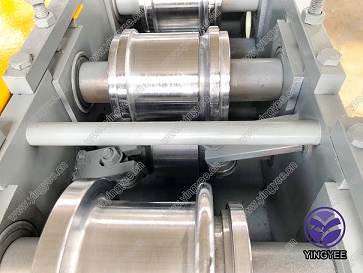
The Suspended Ceiling T-Grid Forming Machine Revolutionizing Interior Design and Construction
The modern architectural landscape is defined by innovation, efficiency, and visual appeal. One critical aspect of interior design, especially in commercial and industrial settings, is the installation of suspended ceilings. Central to this process is the suspended ceiling T-grid forming machine, a sophisticated tool that has transformed how construction professionals approach ceiling installations. This article delves into the functionality, significance, and advantages of this remarkable piece of machinery in the realm of construction.
Understanding Suspended Ceilings
Suspended ceilings, also known as drop ceilings, are widely used in various buildings to conceal wiring, plumbing, HVAC systems, and to improve acoustics. The framework for a suspended ceiling usually consists of a metal grid system, often referred to as T-grid due to its T-shaped cross-section. This grid supports lightweight tiles or panels, offering aesthetic flexibility while allowing easy access to the systems above.
The Role of the T-Grid Forming Machine
The T-grid forming machine is specifically designed to manufacture these metal grid systems with precision and speed. This machine can produce diverse types of T-grids from various materials, including aluminum and galvanized steel, which are durable and provide an appealing finish. The machine automates the shaping, cutting, and welding processes, ensuring high consistency in the production of T-grid components.
Operating a T-grid forming machine typically involves feeding metal coils into the machine, which undergoes processes such as roll forming, punching, and trimming. The end products are lengths of T-grid components that can be easily transported and assembled on-site. Considering the growing demand for suspended ceilings in both new construction and renovation projects, the T-grid forming machine plays a pivotal role in addressing this demand efficiently.
Advantages of Using T-Grid Forming Machines

1. Increased Efficiency One of the primary benefits of the T-grid forming machine is its capability to produce large quantities of grid components in a short time. This drastically reduces the lead time for projects, allowing builders to complete installations more quickly and move on to subsequent tasks without delay.
2. Cost-Effectiveness Automating the production process minimizes labor costs and reduces waste material. As construction firms seek to maximize profit margins while maintaining quality, the T-grid forming machine offers a solution that balances both objectives.
3. Precision and Quality Control The advanced technology integrated into modern T-grid forming machines ensures that each component meets stringent quality standards. Precise measurements and uniform dimensions lead to seamless installations, giving interior spaces a polished look.
4. Versatility These machines can be customized to produce various T-grid designs and sizes, catering to the specific requirements of different projects. This versatility makes them indispensable for contractors who tackle diverse construction challenges.
5. Sustainability With parts produced from recyclable materials, T-grid forming machines contribute to greener construction practices. Using less energy and materials ensures that the construction industry becomes more sustainable, aligning with global efforts to reduce environmental impact.
Conclusion
As the demand for functional and aesthetically pleasing suspended ceilings continues to rise, the importance of T-grid forming machines in the construction industry cannot be overstated. They not only enhance efficiency and reduce costs but also ensure that high-quality standards are maintained. As technology progresses, we can expect even more innovative features and capabilities in these machines, further driving the evolution of interior design and construction practices. The suspended ceiling T-grid forming machine stands as a testament to how technological advancement can reshape traditional industries, making them more responsive to contemporary needs and future demands.